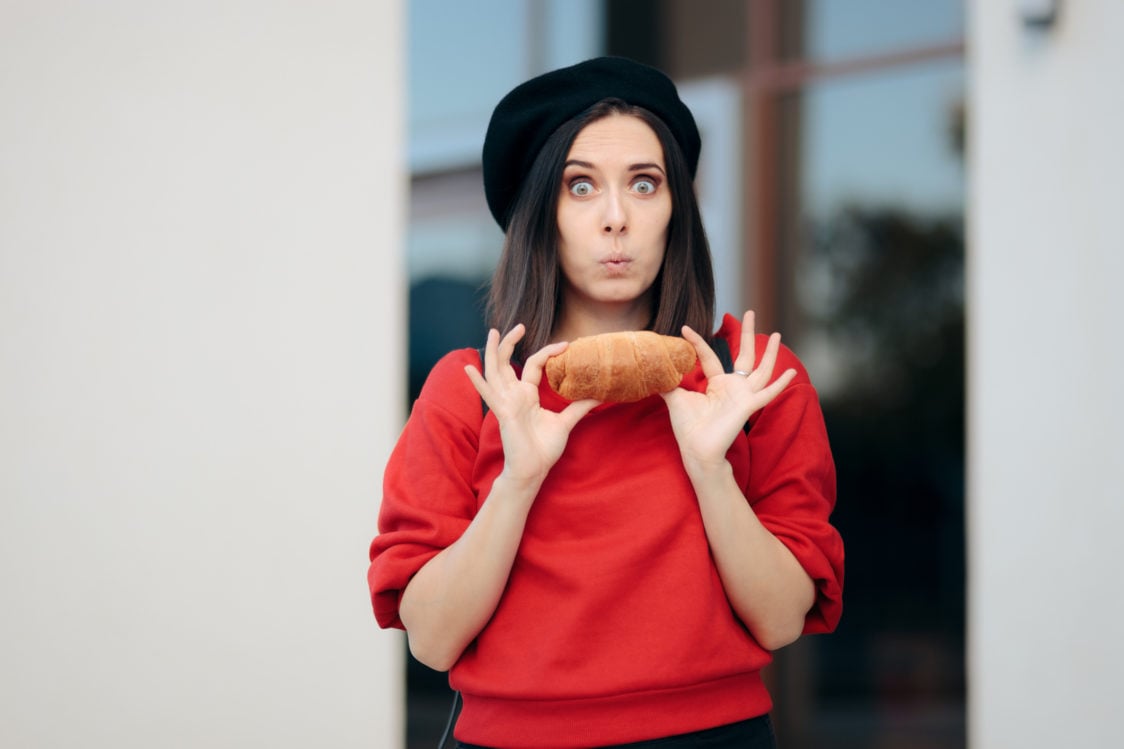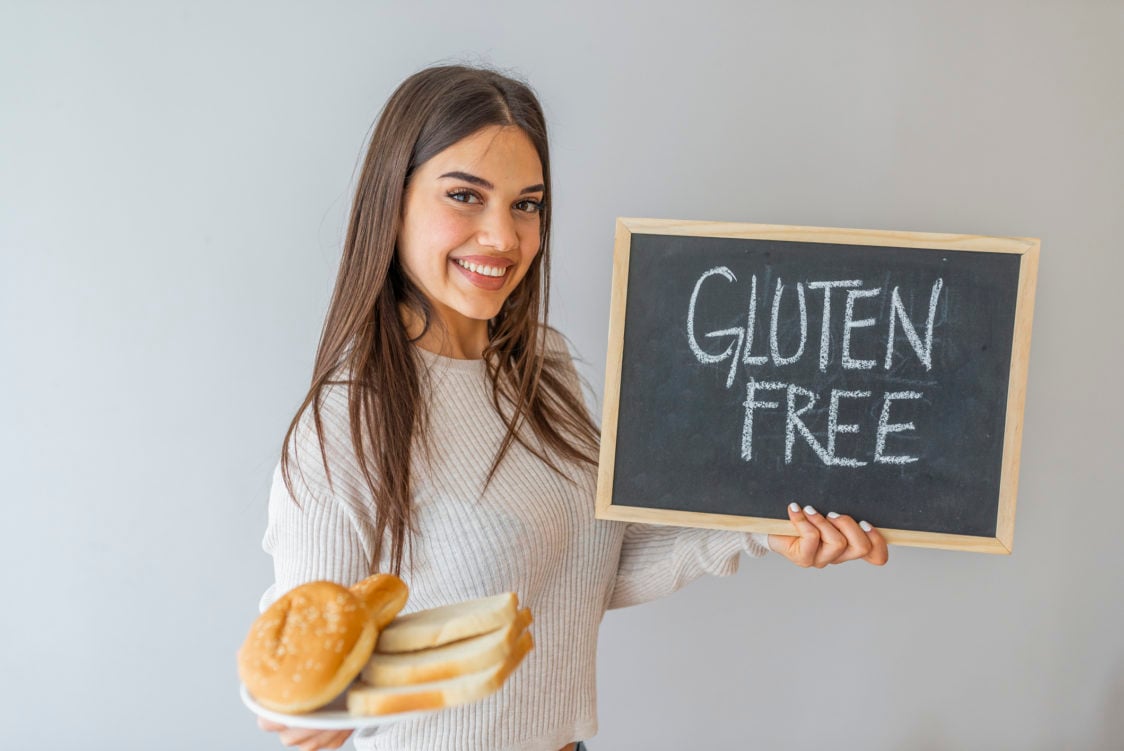Table of Contents
The most common first step people usually take towards weight loss tends to be googling “the most effective diets“. Nobody wants to wait around for ages to achieve results, right? What’s more, Sally said she finally found the diet that let her lose the extra weight that’s been hanging around since she was a teenager, albeit only after about forty failed attempts. She said it was pretty simple – all she had to do was cut out bread, pasta, and just about any other source of gluten from her diet. But is it really necessary to cut out such a large part of our habitual menu? Wouldn’t fewer restrictions do? Find out in today’s article.
Why do people tend to lean towards extremes?
Throughout our lives, all of us develop a certain eating style, which becomes a close habit. With such habit in place, people tend to maintain the same weight for years, or slowly and very inconspicuously put some on, bit by little bit. When the decision to lose weight finally comes along, it is usually accompanied by the sensation that the change needs to be a radical one, ideally so that it shows results within just a few days.
This attitude makes us easily seduced by the promises given by drastic diet programs, which usually call for excluding a certain group of foods. One of the most popular is the gluten-free diet, which instructs against eating baked goods or any other products that contain gluten. The “before” and “after” mirror selfies say it all. After just a few weeks of going gluten-free, people on these pictures show a visibly thinner figure, together with personal testimonies and testimonies from everyone who’s ever tried it. How’s that possible? The truth is that a successful diet doesn’t rest upon cutting out a certain type of food. The entire process is a lot more complicated: all those kilograms of fat you’ve collected over the years will not just disappear after a week.

You might be interested in these products:
So what’s this dreaded gluten thing anyway?
If you are under the impression that gluten is that secret ingredient the manufacturers put into processed foods in order to get us all hooked on endless takeaways of bagels, you’ll be disappointed. Gluten is an umbrella term for a group of proteins naturally occurring in cereals such as wheat, barley or rye, which means it’s been a part of humanity’s regular diet for thousands of years. In wheat, gluten is found as a combination of glutenin and gliadin proteins. In other cereals, such as rye, barley or oats, gluten has a slightly different composition. [1–2]
What happens when you stop eating gluten?
Naturally, the idea of losing a bunch of kilograms over the span of a single week seems rather appealing. Once you cut out all the gluten from your diet, you might actually notice that your bathroom scale shows 3 kilograms less than the week before. However, as disappointing as it might be, this is not due to the desired fat loss. What’s happened is that now your diet likely all of the sudden consists of a lot less carbohydrates than usual. Inside your body, carbohydrates get primarily stored in the form of glycogen, which binds with water. A single gram of glycogen binds approximately three grams of water. Upon lowering the amount of carbohydrates in your diet, you also considerably lower the amount of water stored inside your body, which results in the apparent loss of weight, both on the scale and visually. This quick change is often misinterpreted as a sign of rapid progress, easily turning clueless dieters into true believers. [5–6]
Great, but what’s next? The following week doesn’t keep bringing the same astonishing results, and doubts start slowly sneaking in, accompanied by the cravings for your favourite spaghetti and doughnuts. On week three, the desire to devour anything rich in carbohydrates announces itself in full force. Together with the stagnation in the rapid progress, they foster the sense of helplessness, resulting in your loading up your plate with pasta, eating three doughnuts for a snack and an entire pizza for dinner. The consequence: your glycogen supply gets replenished, together with all the lost water bound to it.
And just as quickly as it disappeared, the weight you’ve lost is back, leaving you disheartened about the three weeks of self-discipline being for nothing. You give up the diet, diagnosing yourself with a broken metabolism, marking another unsuccessful attempt at weight loss into your diary.
Another potential pitfall is replacing all of the gluten-rich foods with foods you might consider healthier, without realizing they are a lot more calorie-dense. In this case, not only you’re not losing any weight, you actually end up putting it on!

When should you actually go gluten-free?
According to some studies, up to 65% of adult Americans believe that gluten-free foods are healthier than their counterparts, and a whole 27% of them pick gluten-free products believing they are more suitable for weight loss. This illusion is effectively maintained by a crowd of popular celebrities that fill social media with testimonials about how great they feel after “kicking the gluten habit”, and how they’ve lost kilograms upon kilograms of weight. However, if your body isn’t actually intolerant to gluten, you can easily produce issues for yourself by excluding it. Your digestive system can lose the habit of processing it, and give you trouble once it’s reintroduced into your diet. [7]
At this point, you might ask yourself: If there’s no miracle gluten-free diet, what’s the point of manufacturing gluten-free products in the first place? The answer is that there is a portion of the population that genuinely needs to avoid gluten for medical reasons. Among such people are those diagnosed with wheat allergies, non-celiac gluten sensitivity, or the Celiac disease.
Health issues related to gluten
People with gluten intolerances often exhibit the following symptoms:
- diarrhea
- constipation
- indigestion (feeling heavy)
- feeling bloated and gassy
- fatigue
- skin rashes
- anxiety
- inexplicable weight loss
- anemia
- autoimmune disorders or joint pains
In case you suspect a gluten-intolerance in yourself, consult a practitioner. Your first indication may also come via aself-diagnosing test, the results of which should be, once again, fully confirmed only by a certified expert. [8–16]
If you want to learn more about gluten, don’t miss out on our article dedicated specifically to it: Gluten – Is It Really Harmful for All of Us?

What does an (un)successful gluten-free diet look like?
Let’s demystify the alleged weight loss superpowers of the gluten-free diet using a specific example. Two friends, let’s call them Ann and Betty, both stick to a gluten-free diet. However, their approaches are significantly different, and, as we’ll see, will therefore yield significantly different results. Both Ann and Betty are 160 cm tall, weight 65 kg, and have a sedentary lifestyle.
Ann was diagnosed with the Celiac disease as a child, and has, by now, learned to live with it. She knows which foods to avoid. Ann also has a solid grasp of how calories work, and tries to maintain a reasonable input of 1578 kcal a day, recommended to her by our calorie calculator for achieving weight loss.
Ann’s diet
Breakfast: 65 g of protein porridge, 10 g of cashew butter, and a medium-sized apple (415 kcal)
Morning snack: BIO Vegan Protein Bar (167 kcal)
Lunch: 70 g of jasmine rice, 150 g of chicken meat, 5 ml of oil, 200 g of cherry tomatoes (497 kcal)
Afternoon treat: Espresso with a dash of milk and 15 g of dark chocolate (100 kcal)
Dinner: 100 g of tuna in brine, 50 g of lentil pasta, 250 g of vegetables, and a spoonful of yoghurt (382 kcal)
Overall daily calorie intake: 1561 kcal
*All of the weights are specific to foods in their raw state.
Betty knows that Ann’s on a gluten-free diet, losing weight successfully, and decides to try it out too. However, she doesn’t understand how calories work. She doesn’t know of the concept of caloric deficit, and imagines that simply excluding gluten from her diet will make her lose weight almost overnight.
Betty’s diet
Breakfast: Full-fat cottage cheese – 150 g, plus 30 g of pecan nuts, and a banana (549 kcal)
Morning snack: a flapjack (424 kcal)
Lunch: 100 g of gluten-free corn flour pasta, 150 g of pork, 10 ml of oil, and cream sauce (937 kcal)
Afternoon treat: A smoothie from 2.5 apples, orange, carrot and celery, plus a pumpkin spice latte from a popular chain (690 kcal)
Dinner: Gluten-free bread – 100 g, plus 30 g of peanut butter and some strawberries(572 kcal)
Overall daily calorie intake: 3172 kcal
*All of the weights are specific to foods in their raw state.
Now, if Betty’s weight maintenance intake is at, say, 1972 kcal, she exceeded it by 1200 kcal. In a single week, that adds up to a total extra of 8400 kcal. By following this diet, Betty took in a caloric surplus equivalent to 1.1 kg of fat. That’s something she certainly did not want to do.
The trick isn’t in cutting out the gluten, it’s in maintaining a calorie deficit
Dieters like Betty, who don’t have a very good grasp on nutrition values of foods, and lack the concept of calorie deficit, are easily seduced by the popular diets that promise quick results. In cases like these, a variety of results might occur.
What happens once you cut out the gluten?
1. You might not know what particular foods to reach for, unintentionally lowering your calorie intake, resulting in felicitous weight loss.
2. The amount of calories in your new, gluten-free diet stays the same, meaning no changes in your body weight take place.
3. You substitute excluded foods with more calorie dense foods (e.g. 30 g of cereals with 30 g of nuts). Your calorie intake goes up, and you end up gaining weight despite the exclusion of gluten from your diet.
If your goal is to lose some weight, there is no sense in restricting yourself from eating your favourite foods, just because your next door neighbour managed to lose weight with a gluten-free diet. What you have to do is adjust and control the amounts of foods you like to eat, so that you can maintain an effective calorie deficit without having to exclude any particular category of foodstuffs. You can find useful information about doing just that in our article about IIFYM, or in our guide to being in calorie deficit without foregoing all the joys of life.
Even Betty now knows that there’s no need to give up on her favourite doughnuts completely. The difference is that she’ll only eat a half of it, and balance it out with a protein milkshake, making her meal a lot more protein rich and in so doing nutritionally balanced.
Gluten as a protein source?
And to wrap the article up, we’ve got one more surprise for you. Did you know that the gluten present in wheat flour is actually used to produce a popular plant-based meat substitute? Seitan is a great source of protein you can even make in your own kitchen. It’s easy: simply wash the flour out, over and over, until a solid mass starts forming. Keep washing the mass out until it drips clear water, and then squeeze the remaining water out of it. The resulting mass can be then seasoned or flavoured and used for cooking. If you want to forego the process of washing out the flour, you can prepare your seitan by using the wheat protein extract. Simply mix it with water, season and mould into the desired shape. [3–4]

The take-home message
Unless you suffer from the celiac disease, a gluten intolerance, an allergy to wheat or other medical condition requiring the exclusion of gluten from your diet, there’s no good reason to give it up in order to lose weight. On the contrary, cutting it out can actually lead to future issues with digesting it once you decide to reintroduce it into your diet. To lose weight successfully, focus on what you eat, and most crucially, in what amounts you eat it.
Try keeping track of what you eat on a daily basis using a notepad, and work on your eating habits consciously. In time, you’ll come to see that your extra kilograms don’t come from eating gluten, but from excess calories. These might just build up in the shape of doughnuts for breakfast, that sweet latte from your favourite coffee shop on the way to work, the mountain of pasta you have for lunch, those two bits of pastry accompanying your afternoon coffee break and a few slices of toast bread for dinner.
Do you know somebody who gets the creeps just by thinking about gluten? Share this article with them; they might just learn that gluten isn’t really the terrible boogieman it is often made out to be.
[1] Anna Sapone et al. – Spectrum of gluten-related disorders: consensus on new nomenclature and classification – https://bmcmedicine.biomedcentral.com/articles/10.1186/1741-7015-10-13
[2] Herbert Wieser – Chemistry of gluten proteins – https://www.sciencedirect.com/science/article/abs/pii/S0740002006001535?via%3Dihub
[3] How To Make Seitan from Whole Wheat Flour – https://eatingrules.com/how-to-make-seitan/
[4] How to Make Seitan from Scratch – https://www.wikihow.com/Make-Seitan-from-Scratch
[5] S N Kreitzman et al. – Glycogen storage: illusions of easy weight loss, excessive weight regain, and distortions in estimates of body composition – https://academic.oup.com/ajcn/article-abstract/56/1/292S/4715743?redirectedFrom=fulltext
[6] Linda G. – Bandini Metabolic Differences in Response to a High-Fat vs. a High-Carbohydrate Diet – https://onlinelibrary.wiley.com/doi/abs/10.1002/j.1550-8528.1994.tb00074.x
[7] Amy L. – Jones The Gluten-Free Diet: Fad or Necessity? – https://spectrum.diabetesjournals.org/content/30/2/118
[8] Vadim Bul – Celiac Disease Presenting as Profound Diarrhea and Weight Loss - A Celiac Crisis – https://pubmed.ncbi.nlm.nih.gov/27492679/
[9] Hugh James Freeman – Iron deficiency anemia in celiac disease – https://www.ncbi.nlm.nih.gov/pmc/articles/PMC4541375/
[10] Manuela Pennisi – Neurophysiology of the “Celiac Brain”: Disentangling Gut-Brain Connections – https://www.ncbi.nlm.nih.gov/pmc/articles/PMC5591866/
[11] Giacomo Caio – Celiac disease: a comprehensive current review – https://www.ncbi.nlm.nih.gov/pmc/articles/PMC6647104/
[12] Emma Clappison – Psychiatric Manifestations of Coeliac Disease, a Systematic Review and Meta-Analysis – https://www.ncbi.nlm.nih.gov/pmc/articles/PMC7019223/
[13] Pekka Collin – Dermatitis herpetiformis: a cutaneous manifestation of coeliac disease – https://pubmed.ncbi.nlm.nih.gov/27499257/
[14] Ilaria Parzanese et al. – Celiac disease: From pathophysiology to treatment – https://www.ncbi.nlm.nih.gov/pmc/articles/PMC5437500/
[15] Berit M Skjellerudsveen – Fatigue in celiac disease: A review of the literature – https://pubmed.ncbi.nlm.nih.gov/31276043/
[16] Anna Sapone et al. – Spectrum of gluten-related disorders: consensus on new nomenclature and classification – https://bmcmedicine.biomedcentral.com/articles/10.1186/1741-7015-10-13

